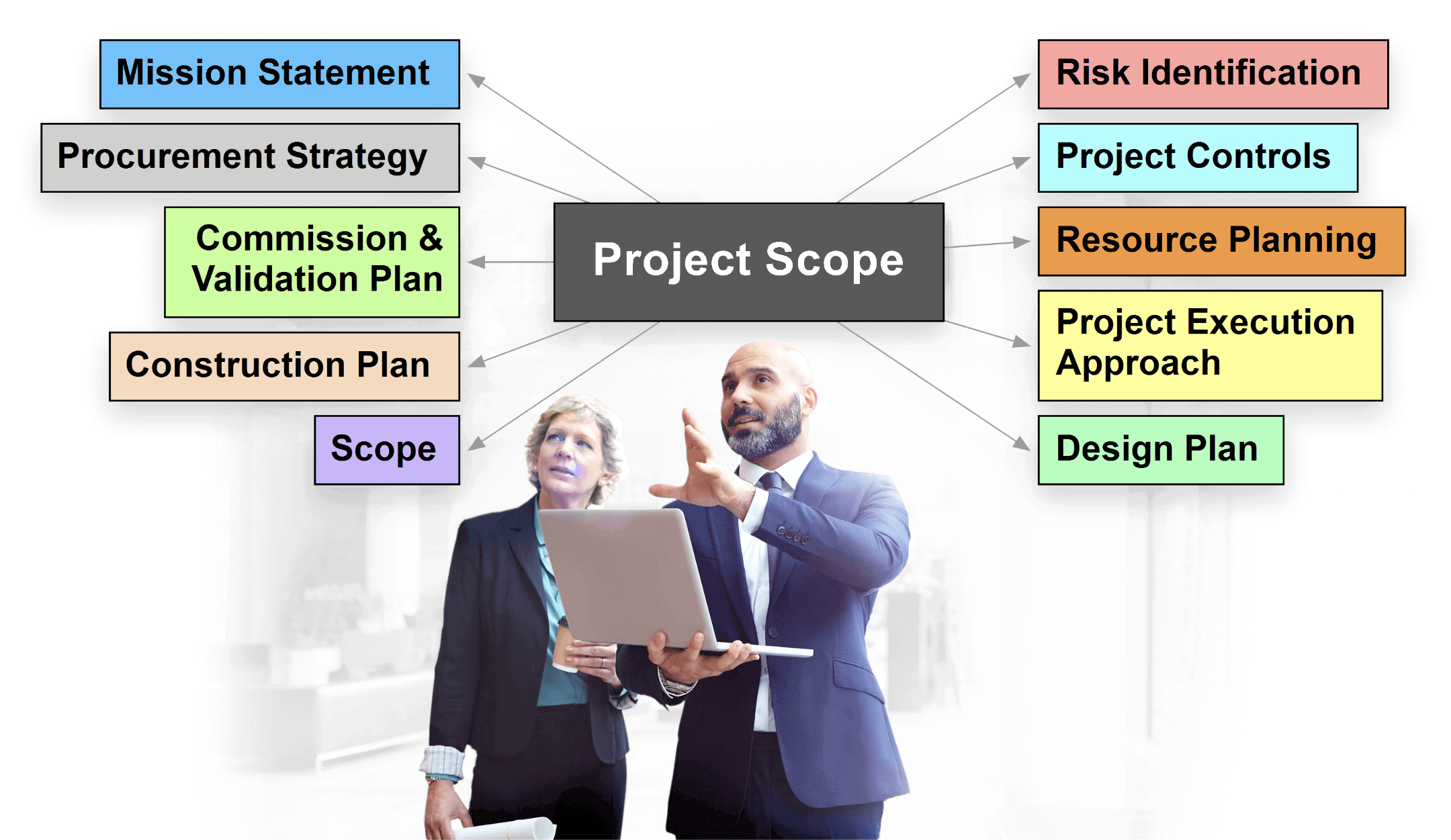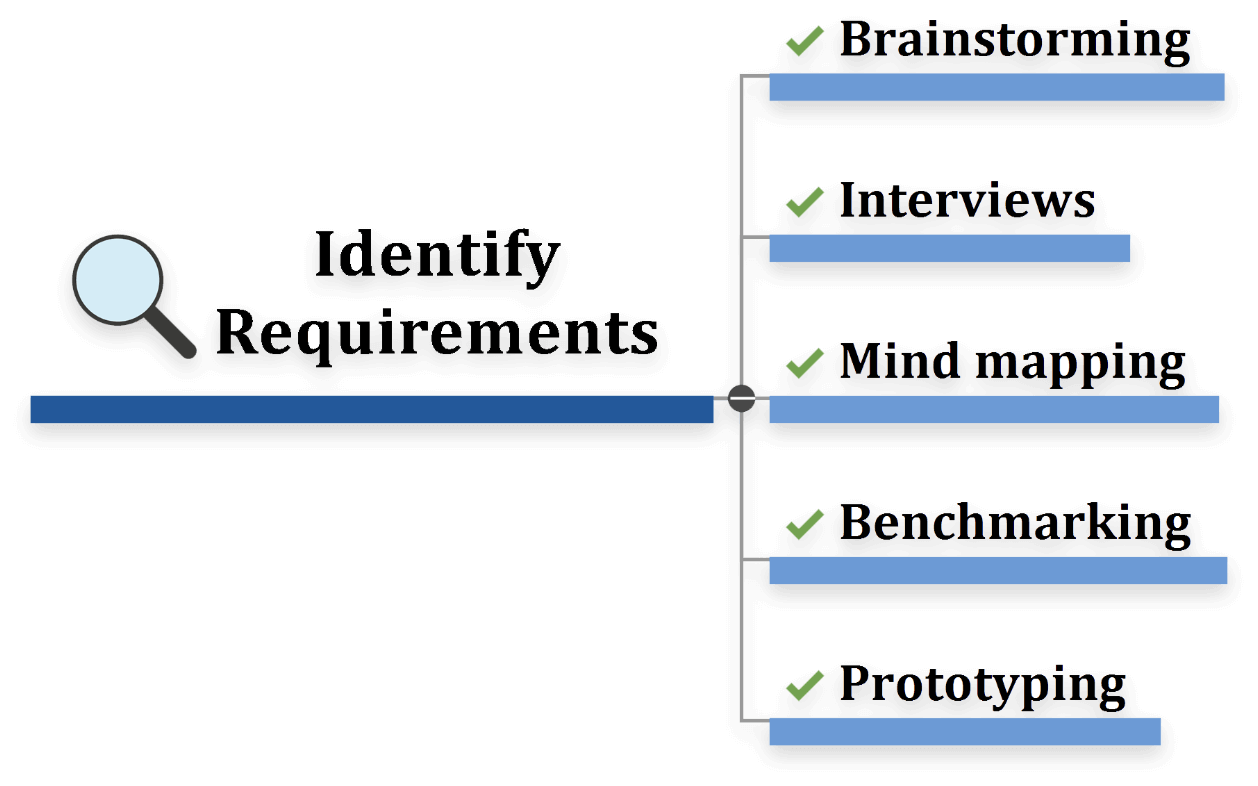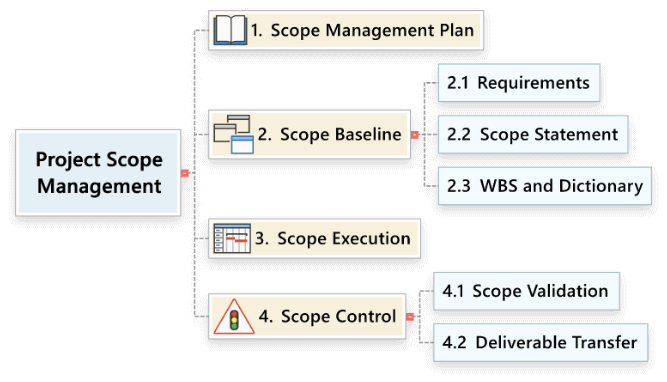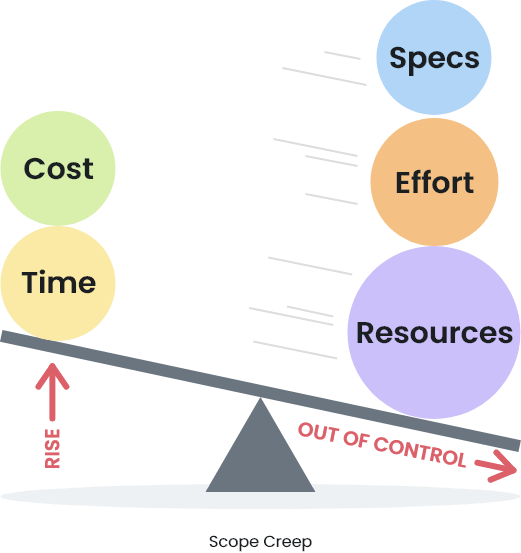This website uses cookies to improve user experience. Privacy Policy

Project Scope
Write a project scope that sets boundaries at the start of a project



Write a project scope that sets boundaries at the start of a project


Project Scope is the detailed description of the project work necessary to meet the requirements of the stakeholders. It obviously addresses what is included. However, by addressing what is excluded can significantly improve the clarity of the required work. There are two types of scope: 1) Product Scope and 2) Project Scope.
Product Scope is a subset of Project Scope. It describes the work required to meet the requirements of the deliverables created by the project. Scope management emphasizes Project Scope because products are the key deliverables of the project. Special project documents and processes are used to ensure that the final product meets the acceptance criteria of the project stakeholders. The unique project documents devoted solely to Product Scope include the Requirements Management Plan and the Requirements Traceability Matrix. Configuration Management is a unique process established to manage changes in the functional or physical characteristics of the Product. The products must also go through verification and validation processes before they can be accepted and transferred to the appropriate stakeholders.
Project Scope includes the Product Scope and describes all of the other work required to be completed by the project. It is described in the Scope Management Plan and the Scope Baseline and captured in the Project Management Plan. The Scope Management Plan documents show how the scope will be planned, executed and controlled.
The Scope Baseline defines the Project Scope in three documents:

How to Create a Project Scope


The Scope Management Plan and the Requirements Management Plan are subsidiary plans in the Project Management Plan. They describe how Project and Product Scope will be planned, executed and controlled. They also define the Product Scope Acceptance Criteria to be met before products can be transferred to the project stakeholders.



Requirements are conditions that must be met in order to meet the needs and expectations of stakeholders. The primary source of requirements are stakeholders. Several tools and techniques are used to identify requirements; such as brainstorming, interviews, mindmapping, benchmarking and prototyping.


Products are defined to meet the requirements. Each product and its associated requirements are documented and tracked in the Requirements Traceability Matrix (RTM). The RTM is used as a tool to track the status and changes of products throughout the project.



The Scope is documented in the Scope Baseline and includes all of the project work to create the products. The Scope Baseline consists of the Scope Statement, the WBS and the WBS Dictionary. It is the formal document used to measure progress against scope performance.


Scope is executed and measured against the Scope Baseline. The Scope Management Plan and the Requirements Management Plan contain thresholds and Acceptance Criteria that the project scope must meet so that the final products can be transferred to the stakeholders.



Any difference between the actual scope and Scope Baseline results in a variance. The Scope Baseline can only be changed by an approved change request that has gone through an integrated change control process. Preventive or corrective actions are identified in the change request in order to bring scope performance in line with the Scope Baseline. Changes in the products are captured in the Requirements Traceability Matrix and approved by the Configuration Management Change.


After the products have been created, they are verified that they are correct. If verified, then each product is validated against the Acceptance Criteria and transferred to the stakeholders.

How to Use Project Scope

Project Scope management is performed to ensure that the project objectives are met and the deliverables can be satisfactorily transferred to the stakeholders. It is management of the Scope Baseline that ensures the project is successful. The Requirements Traceability Matrix is used to track changes in the products and communicate any changes to the stakeholders. Changes in Product Scope and Project Scope are managed in the Configuration Management process and Integrated Change Control process, respectively.


There are two unacceptable situations that scope management can prevent from occurring; Scope Creep and Gold Plating. They are similar because each result in additional unapproved scope being performed. Scope Creep is the completion of minor unapproved scope over a long period of time. Gold Plating is the completion of scope that has been upgraded without getting approval. In both cases, the project manager normally assumes there is adequate budget. However, the completion of unapproved scope results in unexplained cost, and possibly schedule impacts. Proper scope management ensures that only approved scope in the baseline is executed and the project is successful.

As products are created, they are verified by the project team that they meet the requirements in accordance with the Scope Management Plan, Requirements Management Plan and the Scope Baseline. After the products are verified, they are validated by the project team and stakeholders to ensure that they meet the Acceptance Criteria. If they meet the Acceptance Criteria, the products are transferred to the stakeholders. Scope management is critical for project success since its objective is to produce the products that meet stakeholder needs and results in a successful project closing.
